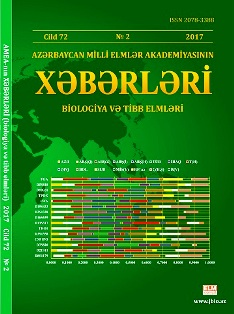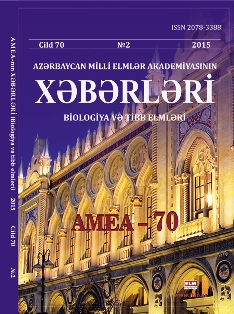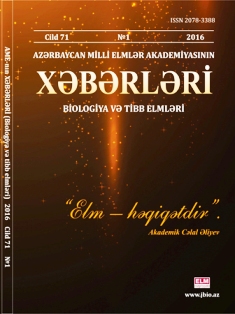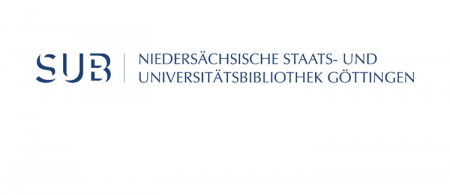
Factors providing adaptations of rose-ringed parakeet (Psittacula krameri) in the urban ecosystems of the city of Baku
Research article: Factors providing adaptations of rose-ringed parakeet (Psittacula krameri) in the urban ecosystems of the city of Baku
Author: Karimov Tahir Arshad, Ahmadli Leyla Ilgar
Institute of Zoology, Azerbaijan National Academy of Sciences, A.Abbaszade Str., Block 504, Passage 1128, Baku AZ1004, Azerbaijan
*For correspondence: tahirornit@mail.ru, leyla.axmedli97@mail.ru
Received: February 25, 2022; Received in revised form: March 03, 2022; Accepted: April 04, 2022
Abstract: Rose-Ringed Parakeet is native to Southeast Asia and Africa. It is a new species in Azerbaijan’s ornithofauna that are settled in the anthropogenic ecosystems of Baku. This article analyzes and interprets nesting, feeding behaviors and interspecific relationships that ensure the adaptation of this species to the urban ecosystems of Baku. Monitoring was conducted in the Baku Seaside National Park as a model area. Rose-Ringed Parakeet has been shown to exhibit high mobility and plasticity in both nesting and seasonal feeding strategies. That is, they select long-lived tall (20-40 m) trees with a trunk diameter of 0.6-1.3 m for successful nesting. They build their nests at a height of 4-6 m above the ground. The diameter of the entrance to the nests (8-10 cm) is suitable for the size of the bird's body. This protects the eggs and chicks from their natural enemies and increases the productivity of the nest (the number of chicks per pair). Another environmental factor that ensures the settlement of this species in Baku is the large number of feed facilities. Rose-Ringed Parakeet satisfies its need for food in all seasons by eating the fruits and seeds of 21 tree species. Both the above-mentioned and the lack of competition between species for nests, natural enemies, as well as human tolerance are the factors that created the conditions for the settlement of this species in the anthropogenic ecosystems of Baku.
Keywords: Rose-Ringed Parakeet (RRP) tree, nest, feed, adapt
References
Mamedov T. (2010) Trees and shrubs of Absheron. Baku: Science and Education, 468 p.
Sultanov E.K., Mamedova S.I. (2004) Birds are flying... Baku: Newspaper Khabar, No. 2: 14. 4. Sultanov E.K., Mamedova S.I., Kemerli R.A., Ismailova S.M. (2005) Aviafauna of the Botanical Garden. Baku: ecology, philosophy, culture, etc. 111-113.
Belausov E.M. (2017) On sightings of Kramer's parrot (Psittacula krameri) in the foothills of the Talas Alatau. Russian Journal of Ornithology, 26 (express issue 1463): 2627-2628.
Mamedova S.I., Ismailova S.M., Kamarli R.A. (2008) Toward the ecology of the Cramery parrot in Baku. Proceedings of the Azerbaijan Zoological Society, 1: 700-703.
Allen C.R., Holling, C. (2010) Novelty, adaptive capacity, and resilience. Ecol. Soc., 15: 24.
Ballmer D.E., Gillings, S., Caffrey, B.J., Swann, R.L., Downey, I.S., Fuller, R.J. (2013) Bird Atlas 2007-2011: Breeding and Wintering Birds of Britain and Ireland. Thetford: BTO Books.
Blackburn T.M., Lockwood J.L., Cassey P. (2015) Influence of numbers on invasion success. Mol. Ecol., 24: 1942-1953; doi: http://dx. doi.org/10.1111/mec.13075.
Blanco G., Giraldo, F., Jimenez Rojas A., Denes F. (2015) Parrots as key links in the structure and functioning of the ecosystem. Ecology and evolution, 5 (18): 4141–4160. doi: 10.1002/ece3.1663.
Brown M. (2009) Die Bestandssituation des Halsbandsittichs Psittacula Krameri in the der Rhein-Neckar-Region (Baden-Württemberg, Rhineland-Pfalz, Hessen), 1962-2008, im Kontext der gesamteuropäischen Verbreitung. Vogelwelt, 130: 77-89.
Chaika C., Michael P., Brown P. (2011) Resource utilization by non-native ringed parrots (Psittacula krameri) and indigenous starlings (Sturnus vulgaris) in Central Europe. Open Ornithological Journal, 5: 17-22; doi: 10.2174/1874453201104010017.
Chalishkan O. (2021) Parakeets of Ankara: rose-ringed parakeets (Psittacula krameri) as exotic species and anthropogenic habitats in Ankara. International Journal of Geography and Geog-raphical Education, 44 (1): 445-460. https://doi.org/10.32003/igge.854992
Franz M.P., Braun, J., Schroeder and Michael W. (2015) Rose-ringed parakeet populations and numbers in Europe: A complete overview. The Open Ornithology Journal, 9 (1): 1-13; doi: 10.2174/1874453201609010001.
Fraticelli F. (2014) In pink-ringed parrot Psittacula krameri in a city park: demographic trend of interspecies relationship and feeding pre-ferences (Rome, Central Italy). Avocetta 38: 23-28.
Jackson H., Strabbe D., Tollington S., Pris-Jones R., Matthisen E., Grumbridge J.J. (2015) Ancestor Origins and Global Invasion. invasive birds are correlated with climate and the influence of the bird trade. Mol. Ecol., 24: 4269-4285; http://dx.doi.org/10.1111/mec.13307).
Katsanevakis S., Bogukarskis K., Gatto F., Vandekerkhove J., Deriu I., Cardosu A.S. (2012) Establishment of the European Alien Species Information Network (EASIN): A new approach to exploring data on distributed alien species. Bio. Invasions Rec., 1: 235-245; http://dx.doi.org/10.3391/bir.2012.1.4.01.
Mohammad W., Irfan A., Tanvir H. (2015) Nesting behavior of rose-ringed parakeet in southern Panjab in Pakistan. Sci. Int. (eLahor), 27 (5): 4255-4260.
Neverova Q.P., Frisman, E.Y. (2020) Popula-tion dynamics regimes with non-overlapping generations considering genetic and stage structures. Computer research and modeling, 12(5): 1165–1190; doi: 10.20537/2076-7633-2020-12-5-1165-1190
Pârâu D., Strubbe E., Morfi M., Menchetti L., Ancillotto A., Kleunen R.L., White Á., Luna D., Hernández-Brito M., Louarn P., Clergeau T., Albayrak D. (2015) Rose-ringed parakeet populations and numbers in Europe: A complete overview. The Open Ornithology Journal, 9 (1): 1-13.
Prajapati S., Prajapati R.(2012) Observations on Hovering. Rose-ringed parrot (Psittacula krameri) habitat. Life Sciences Pamphlets, 7: 56-62.
Simberloff D. (2009) The role of propagule pressure in biological invasions. Annu. Rev. Ecol. Evol. Syst., 204: 81-102.
Strubbe D., Matthissen, E, Graham, C.H. (2010) Assessing the potential impact of the invasive round-necked parrots Psittacula krameri on the native nuthatch Sitta europeae in Belgium. J. Appl. Ecol., 47: 549-57. doi: 10.1111/j.1365-2664.2010.01808.x.
Weiserbs A. (2010) Especes invasives: Le cas des Psittacides en Belgique. Morbidity, risk and event assessment. Aves, 47: 21-35.























